
Once abundant on mainland Australia, it is thought that the Tasmanian devil disappeared a millennia ago.
Now, thanks to a reintroduction effort, 26 of these tiny terrors are now roaming one of Australia’s forests again. It is hoped that the vicious little scavengers can balance ecosystems ravaged by invasive species.
1. Where have Tasmanian devils been introduced?

The raspy shriek of the Tasmanian devil can now be heard in the eucalyptus forests of eastern Australia’s Barrington Tops in New South Wales.
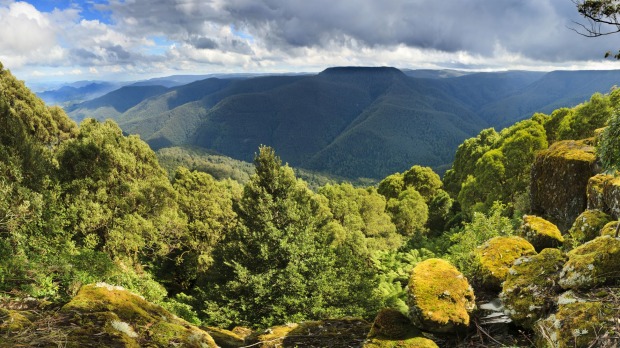
A species recovery program from AussieArk with a group of collaborates organised the release of captive-raised animals in a thousand-acre fenced area called Barrington Wildlife Sanctuary. Situated north of Barrington Top’s National Park the area is about 200km north of Sydney.
2. How will this help Australia’s forests?

As scavengers the Tasmanian devils play a vital role in maintaining a balanced healthy ecosystem, which is the main reason why scientists have been trying so hard to bring them back.

The comeback will push back invasive cats and foxes allowing Australia’s native animals, quolls, potoroos, bandicoots, and bettongs numbers to recover. It will also help regulate populations of wallabies and possums as well as the forests to regenerate and lock up carbon. These small species keep forests healthy by mixing organic material into the soil as they forage, enriching the earth and dispersing seeds. They bury leaf litter and reduce the accumulation of flammable material on the forest floor, supporting cooler and less damaging fires.
3. What was needed to be done to rewild the Tasmanian devil?
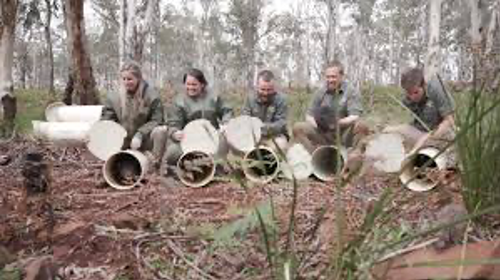
Scientists carried out a soft release in March 2020 by releasing 15 Tasmanian devils into the wild before the eventual launch late 2020. The team used radio- collars to monitor them, as well as leaving kangaroo carcasses for food as the devils adjusted to their new home.
With all the devils surviving, they released a further 11 in September 2020. Presently they are now more or less thriving on their own with the team having basic means of monitoring them.
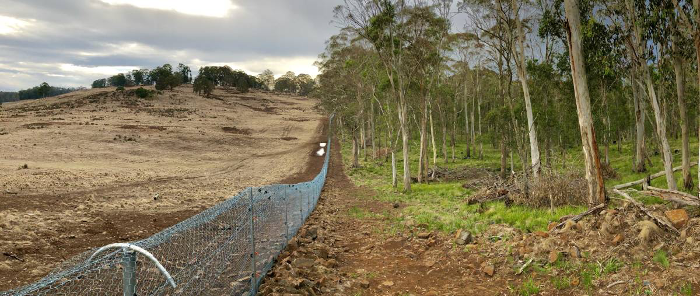
To keep out invaders the team fenced off a large chunk of protected eucalyptus forest. Leaf litter, that can lead to forest fires was cleared and invasive plants was removed. The team used humane lethal control, approved by the Australian government, which included traps and baits.
Predators that have devastated the continents small mammal populations include cats, dingos, and red foxes. To control these the team used humane lethal control, approved by the Australian government, which included traps and baits.
4. Why did the Tasmanian devil die off?
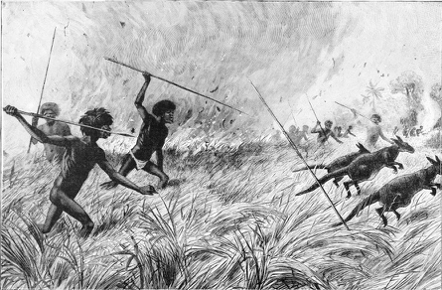
It is unknown why the species vanished from Australia. However, it is generally thought that when early hunters killed off most of the continent’s large herbivores this led to a rise in numbers of carnivores, leaving the devils nothing left to eat.
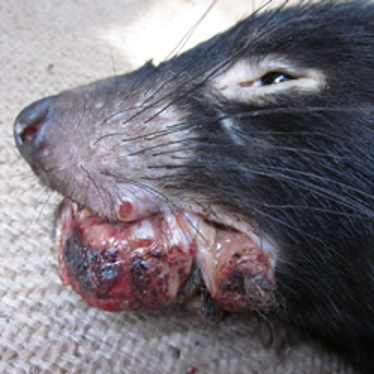
Tasmanian devils did remain south of the Australian mainland in Tasmania, but in the 1990s, the species was hit with a contagious and deadly mouth cancer. Their survival was threatened as this infectious cancer called Devil Facial Tumour Disease (DFTD) was transmitted through fighting, biting, and mating. Since 1996 around 90% of the wild population was gone causing the remaining wild population to drop to just 25,000 animals. The Tasmanian devil is now a protective species and classified as endangered.
Researchers have found the animal’s immune system is being naturally modified to combat the results of this contagious disease. Natural selection is trying to fix the problem by favouring those who can survive the tumour. As a result, the decline in numbers is levelling off.
5. How did the Tasmanian Devil get its name?
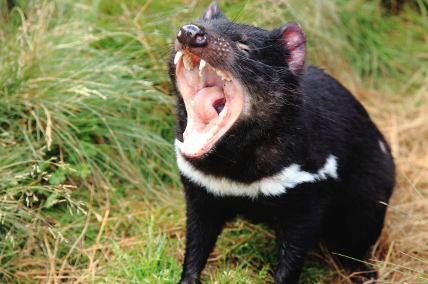
Early European settlers probably chose the name ‘devil ’after hearing the animal’s blood-curdling shriek and the sound of crunching bones as they fed at night. The early settlers must have imagined demons had surrounded them in the wilderness!
https://archive.org/details/TasmanianDevilSounds
Pierre Boitard, a French botanist and who died in 1859, was the was the first person who gave name Tasmanian devil. The early European settlers had named them as Beelzebub which of course is the biblical translation for devil.
6. What is their temperament?
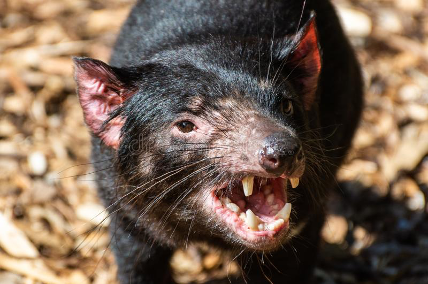
Tasmanian devils are known for their ferocious temperaments and have a reputation for flying into a rage when faced with a predator. They bare teeth, lunge forward, and give out a rasping shriek in the dark hours. Their powerful jaws can reduce large carcasses to small pieces in minutes.
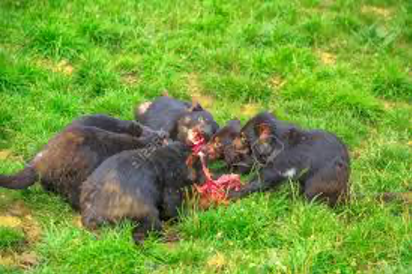
Even though the Tasmanian devil is a solitary creature, they scavenge in small groups. The competition for limited food makes each devil highly defensive of its share of the food. While eating, they let out a petrifying screech and nip at each other’s faces, often drawing blood. Mating is also a violent situation as the males fight over females. Whoever wins seizes the female by the scruff of her neck and drags her back to a den, where they mate.
When devils are not mating or feeding, they spend much of their time peacefully in their dens.
7. Do Tasmanian devils bite or eat humans?
Despite this scary reputation they are not a threat to humans and are generally timid. When they are approached, they will either scamper off or become paralysed with fear. Although they will defend themselves if they are attacked or trapped. They may look fierce, but they would rather escape the fight. It should always be remembered that their powerful jaws if they were to bite would cause serious injury.
People used to think that a Tasmanian devil was a typical devil and would take on humans as they walked in the bush. They are much smaller in size, so even though they are cranky, they could not kill a human much bigger than themselves. In the wild Devils are scavengers and would eat dead human flesh if they found some.
8. Can the Tasmanian devil be kept as a pet?
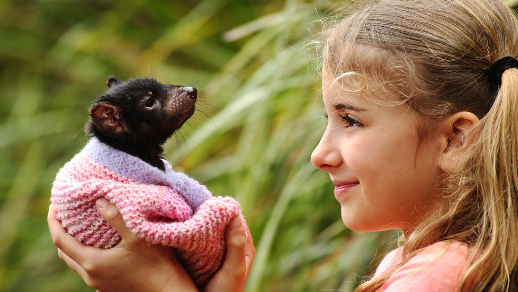
Some people have managed to rear them as pets if handled from birth and have suggested that as a strategy to save the species. Indeed, sugar gliders are kept as pets in the United States.
However, wildlife experts advise that devils would not be suitable as domestic pets because they were anti-social and potentially dangerous. They might seem cute, but hand-reared devils still have wild instincts and could become vicious.

9. What type of animal is the Tasmanian devil?

As the world’s largest living carnivorous marsupial, they are the size of a small dog. The males normally weigh between 8-14kg and the females between 5-9kg with a body length varying from 57cm in females to around 65cm for males. In the wild a healthy disease-free devil can live up to 5-6 years and in captivity they may live up to 8 years.
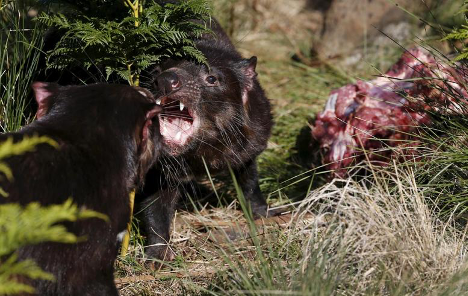
Tasmanian devils are nocturnal species that is they become active at night. They are scavengers rather than hunters. They prefer to eat animals due to roadkill, or predation by other species. They will eat anything of animal origin including insects, reptiles, amphibians, birds, and mammals. Their sense of smell enables them to find carcasses and decaying meat.
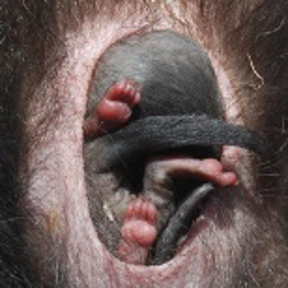
As marsupial mammals, Tasmanian devils give birth to tiny, underdeveloped young which need to complete their development in their mother’s pouch.

Made famous by the Looney Tunes cartoon character ‘Taz’ who was depicted to have an aggressive and excitable character with an enormous appetite.
10. What do their sounds mean?
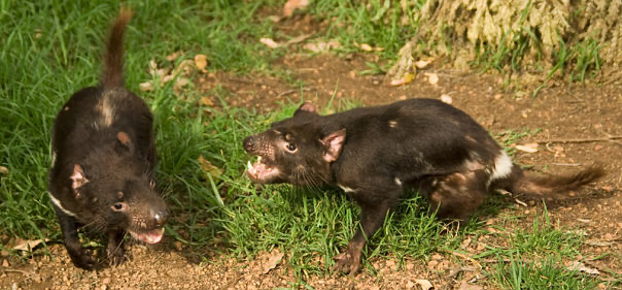
Studies suggest that the Tasmanian devils produce around eleven different sounds to communicate. Most of the sounds are made when they eat in groups as well as meaningful physical postures in sending messages, particularly when they want to show their dominance.
Their sounds include growling, screeching, hissing and vicious yawning. When they are eating, they express themselves with loud disturbing sounds which can be heard from a far distance. If alarmed or threatened, they will growl in the same way that cats do.
